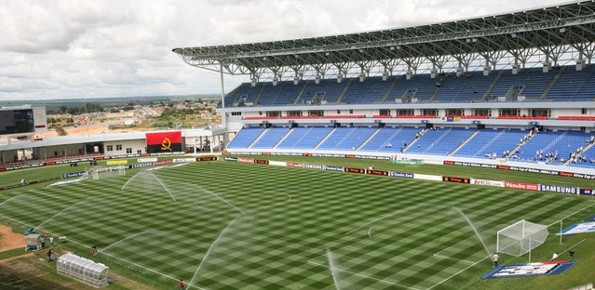Updated on November 5, 2025- Estádio Nacional da Tundavala in Lubango, Angola, which was originally built for the 2010 Africa Cup of Nations, has undergone a necessary facelift to address years of wear and neglect, particularly focusing on its core functionality for football. The renovation primarily centered on a comprehensive recovery of the natural grass pitch, which involved processes like weed removal, soil improvement, leveling, and the repair of the sprinkler system—even sourcing new grass seeds from Namibia.
Beyond the turf, the stadium also saw partial restoration to the overall infrastructure, including the approval of its physical conditions by the Angolan Football Federation in 2022 to allow it to host national Girabola league games again, officially welcoming the 20,000-capacity venue “back in business” for Angolan football.
Angola’s Renewed Sports Commitment
While the Tundavala National Stadium’s recent facelift in Lubango ensured a key 20,000-seat venue from the 2010 AFCON remained viable for professional football, the subsequent inauguration of the all-new, 10,000-seat Vici António Stadium in Uíge represents a broader, forward-looking strategic investment in Angolan sports. Where Tundavala’s renovation addressed the needs of an existing major facility, the Vici António Stadium, built to FIFA, UEFA, and CAF standards, expands the nation’s world-class infrastructure and is positioned specifically as a multi-purpose complex designed to empower youth and elevate regional sports performance.

Reported on August 14, 2021
Angola’s Tundavala Stadium ongoing face-lift is set to be complete by September. The renovation works that involves the recovery of grass include: burning the weed, improving the land, leveling and compaction of the floor, and repair of sprinklers. The grass seeds used were acquired from Namíbia.
Also Read: Dodoma Stadium project in Tanzania edges closer to breaking ground
Tundavala Stadium
Estádio Nacional da Tundavala is a multi-use stadium in Lubango, Huíla Province, Angola. Completed in 2010, it is used mostly for football matches. The stadium has a capacity of 20,000 people.
The stadium is also often used by the Football Club Desportivo Da Huila as their home ground for the Professional football league in Angola, called Girabola. It also hosted matches for the 2010 African Cup of Nations.

